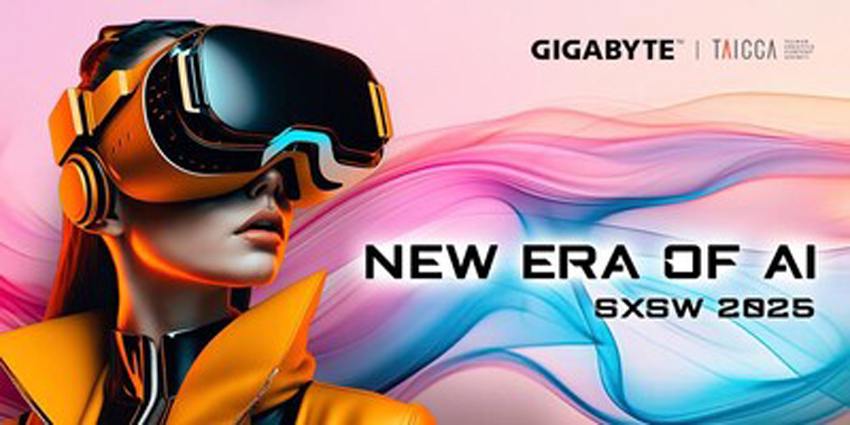This week, at the 2025 SXSW Festival, Immersive Technology innovator Gigabyte, along with art and technology, announced a partnership with Taiwan Creative Content Agency (TAICCA) to promote the deployment of AI-powered XR content creation platforms.
The event is well-known for showcasing the latest arts and technology, and this year, the partnership highlights the event’s reputation at the SXSW 2025 XR Lounge.
As part of the Gigabyte/Taika partnership, companies are developing AI computing technologies. This allows for a new editing workflow alternative to creating XR content.
The platform supports 360 VR video editing with AI-powered extensions, up to 8K Topaz video AI upscaling, Adobe Premiere Pro integration, and immersive 360 VR experience storytelling capabilities.
Additionally, Gigabyte has announced AI Street Fighting Arcade, a text-to-image prompt-based service that will help you create games and immersive experiences.
Gigabyte has announced the 4K 360 VR video editing workflow feature that is ready for VR professionals and promises optimized, AI-powered video production.
Utilizing AI-equipped hardware
This partnership demonstrates the ongoing relationship between AI and XR, helping to surge in the AI hardware and software market and recharge the capabilities of AR/VR/MR solutions.
In particular, Gigabyte’s announcement is supported by the company’s deep AI hardware portfolio, combining the XR content creation workflow with the aforementioned AI software optimization and hardware innovation.
Gigabyte AI PCS supports the creation workflow of VR content. These PCs include integrated hardware such as the Z790 Aorus master motherboard and the GeForce RTX 40 series GPU, which helps drive Gigabyte’s innovation solutions.
Additionally, the TRX50 AERO D motherboard and GeForce RTX 4090 Gaming OC support Gigabyte 8K VR video editing workflow service.
According to Gigabyte, the combined hardware/software products show the “next evolution” of the VR content creation workflow. Therefore, it enhances the capabilities of XR content creators during a period of increasing immersive media consumption.
For example, marketing and advertising campaigns will increasingly leverage XR media to provide interactive and memorable customer outreach programs to engage new and older customers who cater to a new generation of media.



